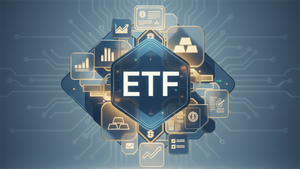
The financial services sector, as of late November 2025, finds itself at a pivotal juncture, characterized by a complex interplay of rapid technological advancement, stringent regulatory evolution, nuanced monetary policy adjustments, and strategic corporate maneuvers. This dynamic environment is not merely shaping the present but is fundamentally redefining the future operational models, risk frameworks, and competitive landscapes for institutions worldwide. The prevailing sentiment is one of cautious optimism, fueled by the transformative potential of Artificial Intelligence (AI) and the anticipation of further interest rate adjustments, yet tempered by the increasing demands of compliance and the inherent uncertainties of a globalized market.
The ongoing digital revolution, spearheaded by AI, is driving unparalleled efficiency and innovation across banking, asset management, and payments. Simultaneously, a wave of new regulations, most notably the Digital Operational Resilience Act (DORA) in Europe and the finalization of Basel III capital requirements globally, is demanding heightened scrutiny on operational resilience and capital adequacy. These forces, combined with the continued ascent of private credit as a major financing alternative and a resurgence in strategic mergers and acquisitions, are compelling financial institutions to adapt at an unprecedented pace, promising a future that is both more secure and more technologically sophisticated.
Detailed Coverage: A Sector in Flux
The financial services sector is witnessing a confluence of major trends and significant announcements that are collectively reshaping its trajectory. From the pervasive integration of AI to sweeping regulatory overhauls and strategic corporate actions, the industry is in a state of continuous evolution.
AI Adoption: The New Operational Paradigm
Artificial Intelligence (AI) has firmly entrenched itself as a core driver within financial services. By the close of 2025, an estimated 85% of banks globally are expected to have integrated AI into their operations, marking a significant shift from experimental use to strategic implementation. This widespread adoption spans critical functions, including risk management, customer service, fraud detection, and compliance automation. AI is primarily enhancing operational efficiency through applications like text analysis, classification, and information search, with major institutions planning full AI strategy integration. For instance, AI-driven fraud detection systems are intercepting a substantial portion of fraudulent activities, with some reporting accuracy exceeding 90%. Generative AI (GenAI) is also being utilized for tasks such as drafting documents, summarizing reports, and generating presentations, while agentic AI promises end-to-end automation of complex workflows.
However, this rapid integration is not without its challenges. Only 38% of AI projects in finance meet or exceed ROI expectations, and over 60% report significant implementation delays. Regulatory bodies are closely monitoring AI's impact, with the European Parliament's Economic and Monetary Affairs Committee (ECON) advocating for clear guidance on applying existing EU financial services legislation to AI, rather than creating new laws.
Regulatory Developments: Strengthening Resilience and Transparency
The regulatory landscape continues to evolve, pushing financial institutions towards greater stability and transparency.
- Basel III Finalization: The Basel Committee on Banking Supervision's (BCBS) finalization of the Basel III framework aims to reduce excessive variability of risk-weighted assets (RWAs) and strengthen the global banking system. Switzerland implemented these reforms on January 1, 2025. In the United States, regulators proposed rules for the "Basel III Endgame," with an expected implementation date of July 1, 2025, and a three-year phase-in period through June 30, 2028. This move is expected to significantly increase capital requirements for large US banks.
- DORA (Digital Operational Resilience Act): The Digital Operational Resilience Act (DORA) became applicable to nearly all EU financial entities on January 17, 2025. This regulation mandates common rules for managing information and communication technology (ICT) risk, including cybersecurity governance, third-party ICT risk management, incident reporting, and digital operational resilience testing. A key development occurred on November 18, 2025, when the European Supervisory Authorities (EBA, EIOPA, and ESMA) published the list of designated critical ICT third-party providers (CTPPs), formally commencing the DORA oversight framework.
- UK Autumn Budget 2025: Announced around mid-November 2025, the UK Autumn Budget introduced several tax changes. Dividend tax rates and savings income tax rates are set to increase by 2% from April 2026 and April 2027, respectively. The annual Cash ISA allowance for individuals under 65 will be reduced from £20,000 to £12,000 from April 6, 2027, though the overall ISA subscription allowance remains at £20,000 until 2031. These tax rises have raised concerns about the UK financial sector's international competitiveness.
Interest Rate Adjustments by the Federal Reserve: A Dovish Tilt
The Federal Reserve has been actively adjusting interest rates throughout 2025. At its October 2025 meeting, the Federal Open Market Committee (FOMC) cut the target range for the federal funds rate by 25 basis points, bringing it to 3.75%-4.0%. This followed a similar reduction in September 2025. The Fed also announced its decision to conclude its quantitative tightening program on December 1, 2025. As of November 28, 2025, market-implied odds for another 25 basis point rate cut at the December 2025 FOMC meeting are high. While these easing measures are expected to support US economic growth and potentially boost stock markets, they can negatively impact bank earnings by compressing net interest margins.
Notable M&A Activities: Strategic Consolidation and Innovation
The financial services landscape has seen significant merger and acquisition activity driven by institutions seeking to enhance capabilities and adapt to technological shifts.
- European Stablecoin Consortiums: A consortium of nine major European banks, including UniCredit (BIT: UCG), Banca Sella, ING (AMS: ING), KBC (EBR: KBC), Danske Bank (CPH: DANSKE), Deka, SEB (STO: SEB A), CaixaBank (BME: CABK), and Raiffeisen Bank International (VIE: RBI), plans to launch a euro-denominated stablecoin. This initiative, expected to issue its first tokens in the second half of 2026 under the EU’s Markets in Crypto-Assets Regulation (MiCAR), aims to bolster Europe's role in digital payments. Separately, Deutsche Börse Group (ETR: DB1) signed a Memorandum of Understanding with AllUnity to integrate AllUnity's regulated euro-backed stablecoin, EURAU, into its infrastructure.
- Deutsche Börse-Allfunds Acquisition: Deutsche Börse Group (ETR: DB1) is in exclusive negotiations to acquire Allfunds Group PLC (AMS: ALLFG), a European fund-technology giant, for approximately $6 billion. The non-binding proposal, confirmed on November 28, 2025, offers €8.80 per share. This strategic move aims to expand Deutsche Börse's presence in the fund-distribution market.
- ABN Amro's Restructuring: Dutch bank ABN Amro (AMS: ABN) unveiled a comprehensive three-year restructuring plan in November 2025. The bank plans to cut 5,200 jobs by 2028, roughly one-fifth of its workforce, as part of an effort to boost profitability and reduce costs. The restructuring is partly driven by AI adoption, with AI expected to handle routine tasks, allowing the bank to refocus on mortgage lending and wealth management in Northwest Europe.
Companies on the Cusp: Winners and Losers in a Shifting Landscape
The dynamic shifts in the financial services sector are creating distinct opportunities and challenges, delineating potential winners and losers among public companies.
The AI Dividend: Tech-Forward vs. Legacy-Bound
Likely Winners: Large, tech-forward financial institutions such as JPMorgan Chase (NYSE: JPM), Capital One (NYSE: COF), RBC (TSX: RY), and Citigroup (NYSE: C) are poised to gain significantly. Their substantial investments in AI research and deployment for fraud detection, operational efficiency, and personalized customer services are yielding tangible benefits. Fintechs, inherently agile and technology-driven, can rapidly integrate AI to scale services and deliver innovative financial products. Asset managers leveraging AI for predictive analytics and quantitative strategies will also secure a competitive edge. AI solution providers catering specifically to the financial sector will see increased demand for their platforms and services.
Likely Losers: Banks burdened with legacy systems and those slow to adopt AI will likely face declining competitiveness. Higher operational costs, less efficient risk management, and an inability to offer personalized services will erode their market share. Companies reliant on repetitive tasks will also face significant job displacement due to AI-powered automation.
Regulatory Impact: DORA and Basel III's Double-Edged Sword
DORA - Digital Operational Resilience Act Likely Winners: Financial institutions with robust digital resilience and strong cybersecurity frameworks will find compliance with DORA easier and may gain a competitive advantage by demonstrating trustworthiness. ICT Third-Party Providers (CTPPs) specializing in compliance and cybersecurity services will experience increased demand. Likely Losers: Institutions with inadequate ICT infrastructure or poor cybersecurity measures face significant costs for upgrades and potential penalties. ICT providers unable to meet DORA's stringent standards risk losing business from regulated financial entities.
Basel III Endgame Likely Winners: Well-capitalized banks with simpler business models and less exposure to complex trading activities will be better positioned to absorb the increased capital requirements. Likely Losers: Global Systemically Important Banks (G-SIBs) and large banks with complex trading operations, such as JPMorgan Chase (NYSE: JPM), are expected to face the most significant increase in capital requirements, potentially impacting profitability and market liquidity. Banks relying heavily on internal models for capital calculations will need to make substantial adjustments.
Interest Rate Trajectories: Navigating the Yield Curve
The impact of Federal Reserve interest rate adjustments depends on their direction. Falling Interest Rates (current trend): Likely Winners: Borrowers, including corporations and consumers, benefit from lower borrowing costs, stimulating investment and consumption. Bond funds typically see capital appreciation as existing bonds with higher yields become more attractive. Growth-oriented companies also benefit from cheaper financing. Likely Losers: Banks may experience compression in Net Interest Margins (NIMs) as lending rates fall faster than deposit costs. Money market funds become less attractive due to lower yields.
The Rise of Private Credit: A New Lending Frontier
Likely Winners: Alternative asset managers with strong private credit platforms, such as Blackstone (NYSE: BX), Ares Management (NYSE: ARES), KKR (NYSE: KKR), and Apollo Global Management (NYSE: APO), are significant beneficiaries, experiencing asset under management (AUM) growth and increased fee income. Institutional investors allocating capital to private credit benefit from potentially higher yields and diversification. Likely Losers: Traditional banks are losing market share in certain lending segments as private credit funds increasingly finance deals, a trend exacerbated by Basel III requirements. Public bond markets may also see capital diverted.
M&A Activities: Strategic Realignment
Deutsche Börse-Allfunds Acquisition: Likely Winners: Deutsche Börse (ETR: DB1) stands to significantly expand its fund services and distribution capabilities, diversifying revenue streams. Allfunds (AMS: ALLFG) shareholders receive a premium for their shares. Likely Losers: Competitors in fund distribution may face increased competition from a larger, more integrated entity.
European Stablecoin Consortiums: Likely Winners: Consortium member banks like ING (AMS: ING) and UniCredit (BIT: UCG) gain an early mover advantage in the regulated euro stablecoin market, enhancing their competitiveness in digital payments. Technology providers supporting stablecoin development will also see increased business. Likely Losers: Traditional payment networks could face disintermediation in the long term. Non-MiCAR compliant stablecoins will struggle for mainstream adoption in Europe.
ABN Amro's Restructuring: Likely Winners: ABN Amro (AMS: ABN), in the long term, aims for enhanced profitability and a reduced cost-to-income ratio through its restructuring. Acquired entities in wealth management also benefit. AI and digitalization solution providers will find opportunities. Likely Losers: ABN Amro employees face significant job cuts. Competitors in divested segments benefit, but ABN Amro loses business in those areas.
Wider Significance: Reshaping the Global Financial Fabric
The current developments in financial services are not isolated events but rather interconnected threads weaving a new fabric for the global financial system. Their wider significance lies in how they are accelerating industry trends, creating ripple effects across the ecosystem, and prompting a re-evaluation of regulatory paradigms and historical precedents.
AI's Transformative Reach and Ethical Imperatives
AI's widespread adoption is driving a fundamental shift in operational models, moving beyond simple automation to intelligent process optimization. This aligns with broader industry trends of hyper-efficiency and data-driven decision-making. The ripple effects are profound: significant workforce restructuring, as exemplified by ABN Amro's (AMS: ABN) job cuts, will necessitate new skill demands and potentially displace jobs, forcing competitors to invest heavily in AI to remain competitive. Early adopters will gain a substantial advantage in offering faster, more personalized, and cost-effective services.
From a regulatory perspective, AI presents a complex challenge. Regulators are grappling with balancing innovation with risks such as data privacy, consumer protection, and financial stability. Concerns around model hallucinations, cybersecurity vulnerabilities, and ethical deployment are paramount. The European Parliament's Economic and Monetary Affairs Committee (ECON) is calling for a proportionate approach to compliance, fostering innovation while ensuring benefits primarily reach end-users. Historically, this mirrors the early internet adoption in finance, where technology outpaced regulation, leading to subsequent efforts to establish oversight and ethical guidelines.
Regulatory Overhaul: A Foundation for Resilience
DORA (Digital Operational Resilience Act) DORA, effective January 17, 2025, signifies a crucial step towards standardizing and fortifying digital resilience across the EU financial sector. Its wider significance lies in making digital resilience a business-wide responsibility, moving beyond fragmented national standards. The ripple effects extend globally, as third-party ICT providers servicing EU financial entities are now subject to stringent oversight. This creates a higher compliance burden, influencing investment in resilient infrastructure and potentially driving consolidation among ICT providers. DORA also prompts regulators to assess applying its exit strategies to AI models, mitigating concentration risks from reliance on third-party AI service providers.
Basel III Endgame The Basel III Endgame, particularly in the US, represents a "sea change" for the banking industry. By significantly expanding capital adequacy requirements to a broader range of banks, it aims to enhance global financial stability. The ripple effects could impact banks' lending and trading activities due to increased capital requirements, potentially affecting profitability and overall lending capacity. The debate over implementation and the risk of a "regulatory race-to-the-bottom" if major jurisdictions diverge highlight the challenges of international standard-setting. This echoes past regulatory responses to financial crises, where increased capital requirements were implemented to prevent future systemic failures.
Interest Rate Policies: A Return to Normalization
The "higher for longer" interest rate environment, followed by anticipated gradual easing, marks a definitive end to the era of ultra-low rates post-Global Financial Crisis. This trend forces banks to strategically manage their assets to mitigate margin pressures and shifts their focus from margin expansion to loan growth. The ripple effects include improved borrower debt repayment capacity and asset quality, but persistently high market interest rates could impede economic growth. Historically, periods of rising and falling interest rates have profoundly impacted bank profitability, consumer spending, and investment behavior, often leading to re-evaluations of risk and adjustments in lending practices.
The Ascent of Private Credit: Redrawing Lending Boundaries
The rapid growth of the private credit market, projected to reach $3 trillion by 2028, is a structural shift fueled by banks retreating from riskier credit exposures due to tighter regulations. This trend is moving private credit deeper into the mainstream, with increasing emphasis on asset-based finance and synergies with private equity. The ripple effects include intensified competition within the lending market, raising concerns about potential rising defaults in lower-quality credits, particularly in a heightened interest-rate regime. Regulatory scrutiny is expected to intensify, with directives like the EU's AIFMD 2.0 placing new obligations on alternative investment funds that originate loans, underscoring the growing systemic importance of this sector.
M&A Activities: Consolidation for a Competitive Edge
Deutsche Börse-Allfunds Acquisition: This potential acquisition signifies a major consolidation in the European investment fund industry, aiming to create a pan-European ecosystem. It aligns with broader trends of financial market infrastructure providers expanding their services across the value chain. The ripple effects include substantial operational efficiencies and cost synergies, potentially benefiting clients through lower costs and broader access to investment funds. Competitors in the fund distribution space will face an enlarged, more integrated player, potentially spurring further consolidation.
European Stablecoin Consortiums: The formation of bank-backed euro-denominated stablecoin consortiums represents Europe's strategic move to strengthen its position in the digital asset ecosystem and counter the US dollar's dominance. This reflects a broader trend towards the digitization of payments, leveraging blockchain technology for efficient cross-border transactions. The ripple effects include a potential boost to euro liquidity pools in decentralized finance and the unlocking of opportunities for tokenized securities, challenging existing payment rails and influencing the development of central bank digital currencies (CBDCs).
ABN Amro Restructuring: ABN Amro's (AMS: ABN) significant job cuts and strategic pivot reflect broader pressures on European banks grappling with subdued loan growth, increased regulatory burdens, and intensifying competition. This highlights a widespread industry trend towards operational streamlining and AI adoption to maintain profitability and competitiveness. The ripple effects include social and operational challenges from job cuts, but if successful, it could position ABN Amro as a leaner, more digitally-enabled institution, potentially spurring similar efficiency drives among competitors.
What Comes Next: Navigating the Future Landscape
The financial services sector stands on the precipice of further profound changes, with short-term adaptations paving the way for long-term structural shifts. Understanding these trajectories is crucial for institutions to strategize effectively.
AI's Continued Ascent: Industrialization and Hyper-Personalization
Short-Term (2025-2026): The immediate focus for AI is on responsible industrialization. Financial institutions are moving beyond pilot programs to integrate generative AI (GenAI) safely into governed data ecosystems. This includes implementing GenAI for automated regulatory report generation, intelligent document processing, and real-time compliance monitoring, promising significant productivity gains (40-60% reductions in document processing times). A critical short-term task is modernizing data foundations, as 60% of successful AI initiatives are expected to depend on robust data platforms by 2026.
Long-Term (2027-2030+): AI will become fully embedded in nearly every aspect of banking. The long-term vision includes hyper-personalization, where customers design their own financial portfolios with tailored products and dynamic pricing. Agentic AI, capable of complex, multi-step tasks, is projected to automate functions like transaction reconciliation and act as personal financial assistants. By 2030, open-source architectures like Linux are expected to form the backbone of banking infrastructure, fostering a more interconnected ecosystem. This will lead to significant labor market transformation, emphasizing human-machine collaboration.
Regulatory Evolution: Compliance and Strategic Adaptation
DORA (Digital Operational Resilience Act): While DORA is now applicable, the short-term challenge (2025-2026) is achieving full compliance, particularly regarding third-party oversight. Institutions must enhance IT governance, conduct regular resilience testing, and manage critical ICT third-party providers effectively. The European Supervisory Authorities (ESAs) will begin direct oversight of critical ICT third-party service providers (CTPPs) in July 2025. In the long term, DORA will fundamentally embed digital resilience into the core strategy and operations of financial entities, fostering a more secure and robust financial ecosystem.
Basel III (Finalization/Endgame): The phased-in implementation of Basel III in the US, starting July 1, 2025, will see banks adapting their capital calculations and risk management frameworks. In the short term, this means significant adjustments to meet increased capital requirements, particularly for large, complex banks. The long-term outcome will be a more consistently capitalized global banking system, reducing systemic risk but potentially altering banks' lending appetite and business models towards less capital-intensive activities.
Interest Rate Trajectories: Managing a "Higher for Longer" Environment
The "higher for longer" interest rate environment, even with anticipated gradual easing through 2026, requires strategic adaptations. In the short term, financial services firms must model various interest rate scenarios, stress-testing portfolios and refinancing obligations. The long-term outlook suggests a stabilization of rates at levels higher than the past decade, forcing institutions to focus on loan growth over margin expansion and to strategically increase the proportion of assets that lock in current high interest rates.
Trajectory of Private Credit: Mainstream Integration
Private credit is set for continued growth, projected to reach $3 trillion by 2028. In the short term, it will continue to fill the void left by traditional banks retreating from riskier credit exposures, particularly in leveraged finance. The long-term trajectory sees private credit becoming a foundational component of institutional portfolios, with increasing diversification into areas like asset-based finance. However, this growth will also bring increased regulatory scrutiny around underwriting standards and potential systemic risks.
M&A Trends: Strategic Consolidation and Quality Focus
The M&A landscape is poised for a more confident and strategic period. In the short term, the fintech industry will see consolidation, with unprofitable startups being acquired or shuttered, while stronger fintechs pursue strategic acquisitions. Traditional banks will continue to acquire successful fintech challengers to integrate emerging technologies. The long-term trend points towards increased M&A activity driven by the need for sustainable unit economics, liquidity, and portfolio optimization, with a strong focus on quality businesses commanding strong valuations. The middle market is expected to take a larger share of transactions due to more rational pricing and lighter regulatory pressures.
Strategic Pivots and Emerging Opportunities
Financial institutions must undertake significant strategic pivots:
- Digital Transformation: Continuous modernization of legacy systems and investment in AI and blockchain, moving towards hyper-automation and customer-centric, personalized experiences.
- AI-First Strategy with Governance: Developing enterprise-level AI strategies with robust governance frameworks, ensuring explainability, accountability, and ethical deployment.
- Operational Resilience: Strengthening cybersecurity and digital operational resilience in line with DORA requirements.
- ESG Integration: Developing comprehensive data collection and reporting for ESG, and integrating ESG factors into investment decisions.
- Open Banking and Collaboration: Expanding open banking strategies and actively partnering with fintechs to develop new data-driven business models.
Emerging market opportunities lie in fintech growth and financial inclusion, particularly in Asia-Pacific, Europe, the Middle East, Africa, and Latin America, where AI can help bring unbanked segments into regulated financial services. Challenges include navigating increasing regulatory complexity, with DORA's reach extending to third-party ICT providers globally.
Potential Scenarios and Outcomes
- Base Case (Solid Growth with Adaptation): Continued AI investment with gradual adoption and incremental productivity gains. Institutions successfully navigate DORA and Basel III. Steady, strategic M&A. Private credit continues to fill funding gaps.
- Bull Scenario (Tech Boom and Accelerated Transformation): Robust, broad-based AI spending and rapid adoption, driving significant productivity and corporate profits. Agentic and physical AI applications accelerate, fueling optimism and further investment, leading to a highly efficient, hyper-personalized financial sector.
- Bear Scenario (Disruption and Regulatory Bottlenecks): AI investment stalls due to disappointing monetization or technical setbacks. Regulatory complexity overwhelms institutions, leading to increased compliance costs, fines, and a widening gap between digitally advanced and lagging institutions. Macroeconomic headwinds exacerbate these challenges.
Comprehensive Wrap-Up: A Resilient and Evolving Sector
The financial services sector, as of late November 2025, is immersed in a period of profound transformation, simultaneously de-risking through robust regulation and innovating through cutting-edge technology. The interwoven trends of widespread AI adoption, the implementation of stringent regulations like DORA and Basel III, a shifting global interest rate environment, the burgeoning growth of private credit, and strategic M&A activities are collectively reshaping the industry's contours.
Summary of Key Takeaways:
- AI as a Core Driver: AI has transitioned from an experimental tool to a strategic imperative, driving efficiency, enhancing risk management, and revolutionizing customer experience. Generative AI and agentic AI are poised for significant impact, though challenges in implementation and governance persist.
- Regulatory Fortification: DORA and Basel III are creating a more resilient and capital-strong financial system. DORA mandates comprehensive digital operational resilience, extending oversight to critical third-party ICT providers, while Basel III endgame reforms are significantly increasing capital requirements for large banks.
- Monetary Policy Normalization: Central banks are generally in an easing cycle, with anticipated rate cuts through 2026. This environment is broadly supportive of economic activity but compresses bank net interest margins and necessitates strategic asset management.
- Private Credit's Ascendancy: The private credit market continues its rapid expansion, filling gaps left by traditional bank lending and becoming a foundational component of institutional portfolios. This growth, however, brings increased scrutiny regarding systemic risks and underwriting standards.
- Strategic M&A: Mergers and acquisitions are characterized by strategic consolidation, driven by the need for scale, efficiency, and technological capabilities, particularly in fintech and asset management.
Assessment of the Market Moving Forward:
The market is moving towards a future characterized by increased technological sophistication, heightened regulatory oversight, and evolving competitive dynamics. The emphasis on digital operational resilience and capital strength will foster greater stability but may also shift certain activities to less regulated non-bank institutions. AI's lasting impact will be profound, not just in efficiency gains but in fundamentally reimagining financial products and client interactions, making financial institutions more data-driven and automated. The continued growth of private credit represents a structural shift in capital markets, demanding careful monitoring for systemic risks. Moderating interest rates offer broad support but underscore the importance of regional diversification. M&A activity will continue to reshape industry structure, driving consolidation and fostering innovation.
Final Thoughts on Significance and Lasting Impact:
The current period represents a crucial inflection point. The financial sector is becoming more robust, capable of withstanding digital threats and economic shocks, yet simultaneously more agile and innovative due to AI. The lasting impact will be a financial ecosystem that is more interconnected, data-driven, and customer-centric. This transformation will not be without its challenges, including workforce adjustments, the ethical deployment of AI, and navigating complex regulatory landscapes. However, the overall trajectory points towards a more efficient, resilient, and technologically advanced global financial system.
What Investors Should Watch For in Coming Months:
- AI Integration & Valuation Scrutiny: Investors should prioritize financial institutions demonstrating clear, strategic, and responsible AI integration, particularly those addressing data quality, talent, and governance. Be selective with AI-related stocks, acknowledging the risk of stretched valuations if high expectations are not met.
- Regulatory Preparedness: Closely monitor financial institutions' progress in meeting DORA requirements, especially concerning third-party risk management and digital resilience. Companies struggling with compliance may face operational disruptions or penalties. Also, observe how large banks adjust their capital allocation strategies in response to Basel III endgame requirements.
- Interest Rate Trajectory and Economic Signals: Pay attention to central bank communications regarding future rate cuts and inflation data. With further easing anticipated, consider locking in potentially better rates in longer-term bonds for diversification and stable income, while being cautious about tight spreads in high yield. Regional diversification is crucial given diverging inflation and monetary policies.
- Strategic Approach to Private Credit: Recognize private credit as a foundational asset class and seek diversified exposure, particularly in areas like asset-based finance and direct lending. Emphasize careful manager selection, strong credit underwriting capabilities, and robust risk management, as market crowding and spread compression necessitate vigilance regarding credit quality. Be aware of the opacity risks associated with this growing market.
- M&A as a Catalyst: Identify opportunities in sectors undergoing strategic consolidation, such as asset and wealth management, where M&A can unlock synergies and create stronger entities. Consider companies positioned to benefit from or participate in M&A activities aimed at acquiring advanced digital capabilities and fintech innovations.
This content is intended for informational purposes only and is not financial advice




